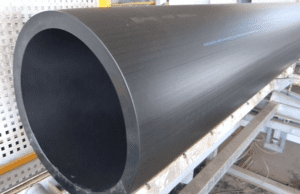 In the public lately, there are two terms that seem to be causing some confusion. Those are the terms of bandwidth and throughput. Whereas they may be similar, there are distinctive differences between the two. There are not many things that are as crucial when measuring network performance and speed. Of course, low network speeds means your apps will move at a snail’s pace. We will explain the differences and explain how each term can be used to measure network speed.
In the public lately, there are two terms that seem to be causing some confusion. Those are the terms of bandwidth and throughput. Whereas they may be similar, there are distinctive differences between the two. There are not many things that are as crucial when measuring network performance and speed. Of course, low network speeds means your apps will move at a snail’s pace. We will explain the differences and explain how each term can be used to measure network speed.
- Throughput – Term used for the amount of data that can be transferred from host to recipient in a certain amount of time.
- Bandwidth – This term is used for the maximum transfer capacity of a network.
Let’s take a closer look at these terms.
What is Throughput?
Again, throughput is the name given to the amount of data that can be sent and recieved within a certain timeframe. It measures the rate at which messages successfully arrive. If you are familiar with packets, it will tell you the average number of packets that are arriving at their destination. High-performance means that the service packets needs to reach their destination. If you are having an issue with packet loss, that will cause your network to performance to be slow. The two units of measure are typically used in this case. Those are bps (bits per second) and data packets per second. As we said, if you encounter low throughput, packet loss can cause problems when streaming.
What is Bandwidth?
Bandwidth is just the measure of how much data can be sent and recieved at one time. As you can guess, higher bandwidth does not mean you will have better speed, all it measures is capacity. No matter how much bandwidth you have, if you have issues with packet loss, latency, or jitter, you will not have the best performance.
Simply put, without the performance of the connection (throughput), your bandwidth won’t matter much. If you have a large pipe but a low flow, you are no better off than those that have a smaller pipe and better flow. ISPs typically advertise high speeds based on bandwidth. Even though it sounds good, without good throughput numbers it won’t matter. Another factor has to do with latency (the speed that the packets reach their destination). While the two are closely related, latency is more important than capacity.
What Tools Measure Throughput?
Instead of measuring capacity, a more accurate measure of your network is actually throughput. However, most tools only measure your bandwidth. Now, we will discuss the best options to measure throughput, latency, packet loss, and bandwidth. These tools will give you a more accurate portrayal of your actual network performance.
- Solarwinds Network Bandwidth Analyzer
- SolarWinds NetFlow Traffic Analyzer
- Paessler PRTG Network Monitor
Ways to Optimize Network Bandwidth
- Use cloud-based applications
- Eliminate non-essential traffic
- Perform backups and updates during non peak hours.
How to Optimize Network Throughput
- Monitor endpoint usage
- Find and address network bottlenecks (through the tools we mentioned above
Final Thoughts
Hopefully we have shown you the differences between throughput and bandwidth. Of course, paying close attention to both of them will ensure you get the best possible speeds and give you the best view of your network performance. Just remember that bandwidth is capacity and throughput shows the success rate of your information. Please share this post with your friends so they can learn the diffences between these two units of measure. Follow us @VPNFan for the latest privacy guides, VPN deals, and news.
